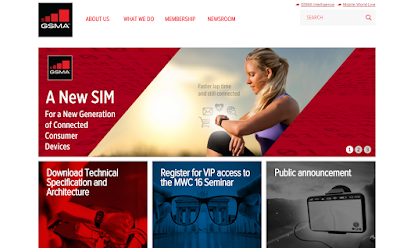SK Telecom is working with Ericsson to build an end-to-end 5G trial network by the end of this year.
 The companies recently achieved peak downlink throughput of over 25 Gbps with Ericsson 5G Radio Prototypes They have also previously demonstrated 5G network slicing.
The companies recently achieved peak downlink throughput of over 25 Gbps with Ericsson 5G Radio Prototypes They have also previously demonstrated 5G network slicing.
Park Jin-hyo, Senior Vice President and Head of Network R&D Center at SK Telecom, says: “SK Telecom is focused on technology innovations that will ensure the early success and rapid adoption of new 5G services for our customers and we are collaborating on end to end 5G field trials with Ericsson. By leveraging MU-MIMO, Massive MIMO and beam tracking, we are clearly demonstrating peak throughput of more than 25 Gbps that shows the commercial viability of millimeter wave band spectrum for 5G.”
SK Telecom is a long-time Ericsson customer.
http://www.ericsson.com
 Ericsson demoed 5G network slicing at an event held by SK Telecom in Korea. The demo showed a single physical network being partitioned into multiple virtual networks to offer optimal support for different types of services for different types of customer segments. The instantiation of the network slicing used the NFV-based Ericsson Virtual Evolved Packet Core (EPC).
Ericsson demoed 5G network slicing at an event held by SK Telecom in Korea. The demo showed a single physical network being partitioned into multiple virtual networks to offer optimal support for different types of services for different types of customer segments. The instantiation of the network slicing used the NFV-based Ericsson Virtual Evolved Packet Core (EPC).
By using logical instead of physical resources, Ericsson says operators could provide networks on an as-a-service basis, which enhances operational efficiency while reducing time-to-market for new services.
Ericsson and SK Telecom also plan to build the world’s first hyperscale datacenter for 5G based on Ericsson’s pioneering HDS 8000
 The companies recently achieved peak downlink throughput of over 25 Gbps with Ericsson 5G Radio Prototypes They have also previously demonstrated 5G network slicing.
The companies recently achieved peak downlink throughput of over 25 Gbps with Ericsson 5G Radio Prototypes They have also previously demonstrated 5G network slicing.Park Jin-hyo, Senior Vice President and Head of Network R&D Center at SK Telecom, says: “SK Telecom is focused on technology innovations that will ensure the early success and rapid adoption of new 5G services for our customers and we are collaborating on end to end 5G field trials with Ericsson. By leveraging MU-MIMO, Massive MIMO and beam tracking, we are clearly demonstrating peak throughput of more than 25 Gbps that shows the commercial viability of millimeter wave band spectrum for 5G.”
SK Telecom is a long-time Ericsson customer.
http://www.ericsson.com
Ericsson Demos 5G Network Core Slicing with SK Telecom
 Ericsson demoed 5G network slicing at an event held by SK Telecom in Korea. The demo showed a single physical network being partitioned into multiple virtual networks to offer optimal support for different types of services for different types of customer segments. The instantiation of the network slicing used the NFV-based Ericsson Virtual Evolved Packet Core (EPC).
Ericsson demoed 5G network slicing at an event held by SK Telecom in Korea. The demo showed a single physical network being partitioned into multiple virtual networks to offer optimal support for different types of services for different types of customer segments. The instantiation of the network slicing used the NFV-based Ericsson Virtual Evolved Packet Core (EPC).By using logical instead of physical resources, Ericsson says operators could provide networks on an as-a-service basis, which enhances operational efficiency while reducing time-to-market for new services.
Ericsson and SK Telecom also plan to build the world’s first hyperscale datacenter for 5G based on Ericsson’s pioneering HDS 8000

















